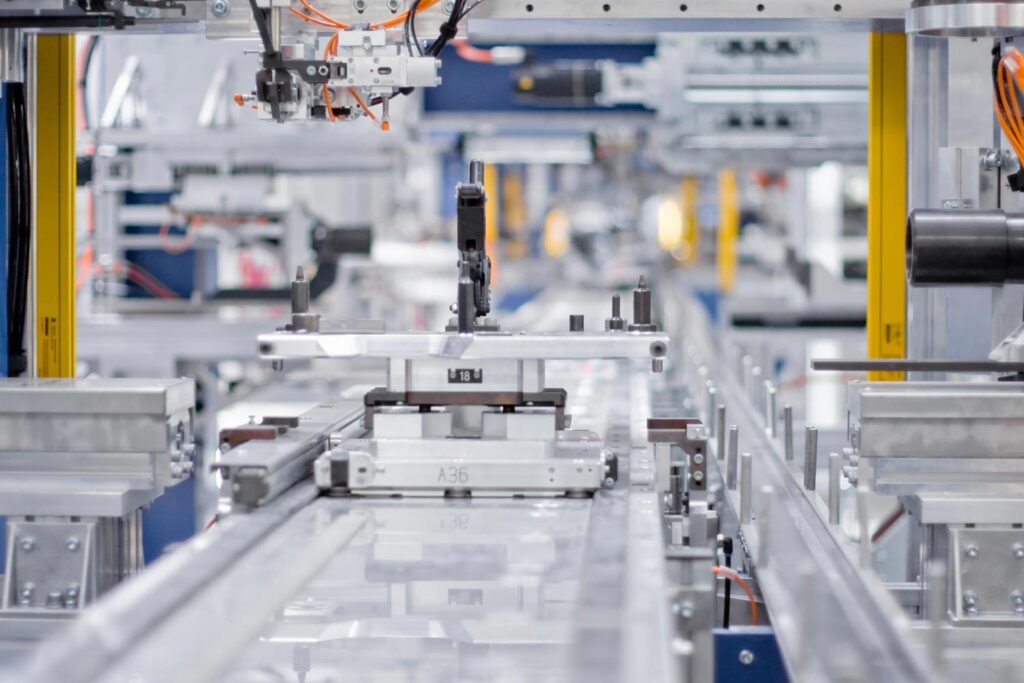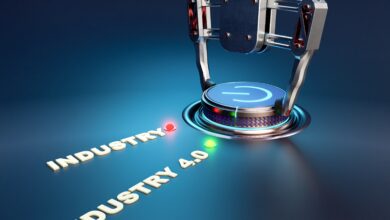The future of industrial production is considered to be manufacturing automation. What does it signify, and how does it operate? In this guide, we will explore Automation in Manufacturing in depth.
The Dawn of Automation in Manufacturing
-
Understanding Automation
Imagine you’re baking cookies. Is it easier if a machine could care for everything instead of manually mixing ingredients, setting the temperature, and timing the baking process? That’s automation — using technology to perform tasks without human intervention.
In manufacturing, automation translates to machines and systems carrying out production tasks that human workers once performed.
Historical Perspective of Manufacturing Automation
During the Industrial Revolution, the concept of automation was first introduced. Its prevalence has consistently increased, particularly since computers and the internet were introduced. Technological advancements in robotics and artificial intelligence are driving the rise of intelligent automation.
The Mechanism Behind Manufacturing Automation
-
Types of Automation in Manufacturing
Automation in manufacturing can be categorized into three major types: fixed, programmable, and flexible. Fixed automation involves a consistent, unchanging production line. Programmable automation allows for the change in product design, while flexible automation enables the production of various products.
-
Key Components of Automation in Manufacturing
Key automation components in manufacturing range from simple sensors and actuators to complex industrial robots and machine-learning algorithms. The harmony between these elements forms the backbone of an automated manufacturing system.
The Advantages of Automation in Manufacturing
-
Efficiency and Productivity
Just like our hypothetical cookie-baking machine, automation in manufacturing boosts efficiency and productivity. It minimizes human error, allows round-the-clock production, and speeds manufacturing.
-
Quality and Consistency
Automation in manufacturing ensures product quality and consistency by reducing variations in manual processes. Thanks to automation, your favourite smartphone’s components are perfect replicas of each other!
-
Safety and Sustainability
By replacing humans in hazardous working conditions, automation significantly reduces workplace accidents. Additionally, it promotes sustainability by optimizing resource utilization and reducing waste.
The Drawbacks and Challenges of Manufacturing Automation
-
Cost Considerations
Despite its numerous benefits, implementing automation requires substantial capital investment. Businesses must balance the initial costs against the long-term benefits.
-
The Human Factor
While automation might improve efficiency, it often raises concerns about job displacement. There’s an ongoing debate about its impact on the labour market, highlighting the need for effective strategies to manage this transition.
Emerging Trends in Automation in Manufacturing
-
Robotics and AI
From autonomous mobile robots (AMRs) in warehouses to AI-powered predictive maintenance systems, the line between science fiction and reality is becoming increasingly blurred.
-
IIoT and Industry 4.0
Integrating the Industrial Internet of Things (IIoT) with automation in manufacturing has given birth to Industry 4.0, characterized by smart factories where machines communicate and make decisions autonomously.
The Future of Manufacturing Automation
As we gaze into the future, we see automation in manufacturing becoming more prevalent, sophisticated, and intelligent. The convergence of technologies like AI, robotics, IIoT, and machine learning will continue to reshape the manufacturing landscape in unprecedented ways.
Conclusion
An effective instrument in the current industrial age is manufacturing automation. Like every tool, it has benefits and drawbacks, but there is no denying that it can transform the industrial industry. The future is undoubtedly automated, but navigating this journey will be instrumental in shaping a prosperous, sustainable industrial future.



